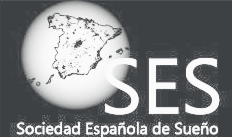Reliability of home respiratory polygraphy for the diagnosis of sleep apnea in children.
Alonso-Álvarez ML, Terán-Santos J, Ordax Carbajo E, Cordero-Guevara JA, Navazo-Egüia AI, Kheirandish-Gozal L, Gozal D. Chest. 2015 Apr;147(4):1020-8.
OBJECTIVE: The objective of this study was to evaluate the diagnostic reliability of home respiratory polygraphy (HRP) in children with a clinical suspicion of OSA-hypopnea syndrome (OSAS).
METHODS: A prospective blind evaluation was performed. Children between the ages of 2 to 14 years with clinical suspicion of OSAS who were referred to the Sleep Unit were included. An initial HRP followed by a later date, same night, in-laboratory overnight respiratory polygraphy and polysomnography (PSG) in the sleep laboratory were performed. The apnea-hypopnea index (AHI)-HRP was compared with AHI-PSG, and therapeutic decisions based on AHI-HRP and AHI-PSG were analyzed using intraclass correlation coefficients, Bland-Altman plots, and receiver operator curves (ROCs).
RESULTS: Twenty-seven boys and 23 girls, with a mean age of 5.3 ± 2.5 years, were studied, and 66% were diagnosed with OSAS based on a PSG-defined obstructive respiratory disturbance index ≥ 3/h total sleep time. Based on the availability of concurrent HRP-PSG recordings, the optimal AHI-HRP corresponding to the PSG-defined OSAS criterion was established as ≥ 5.6/h The latter exhibited a sensitivity of 90.9% (95% CI, 79.6%-100%) and a specificity of 94.1% (95% CI, 80%-100%).
CONCLUSIONS: HRP recordings emerge as a potentially useful and reliable approach for the diagnosis of OSAS in children. However, more research is required for the diagnosis of mild OSAS using HRP in children.
Ventana Científica. Diciembre 2015. Artículo 93
Reliability of home respiratory polygraphy for the diagnosis of sleep apnea in children.


